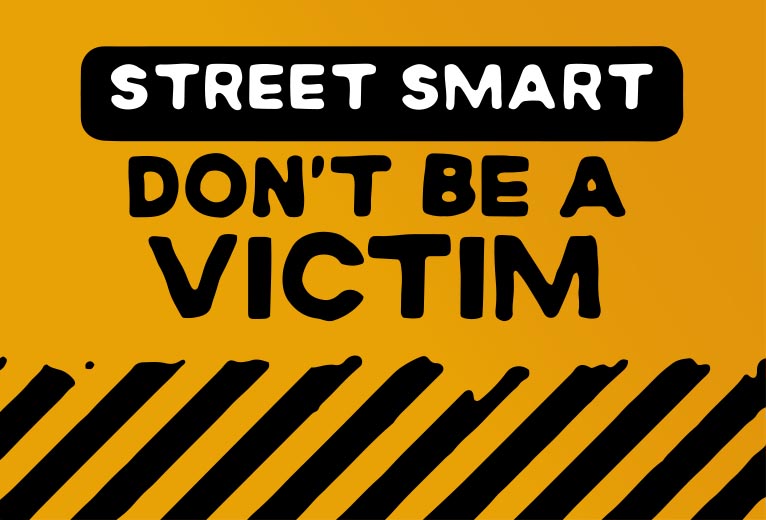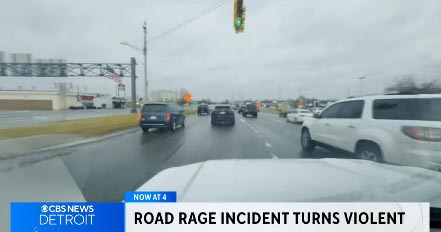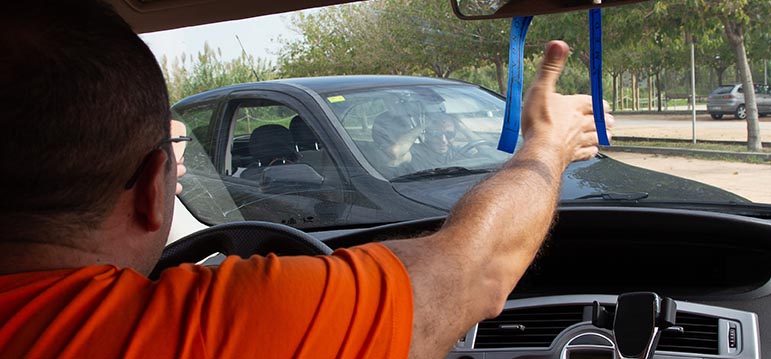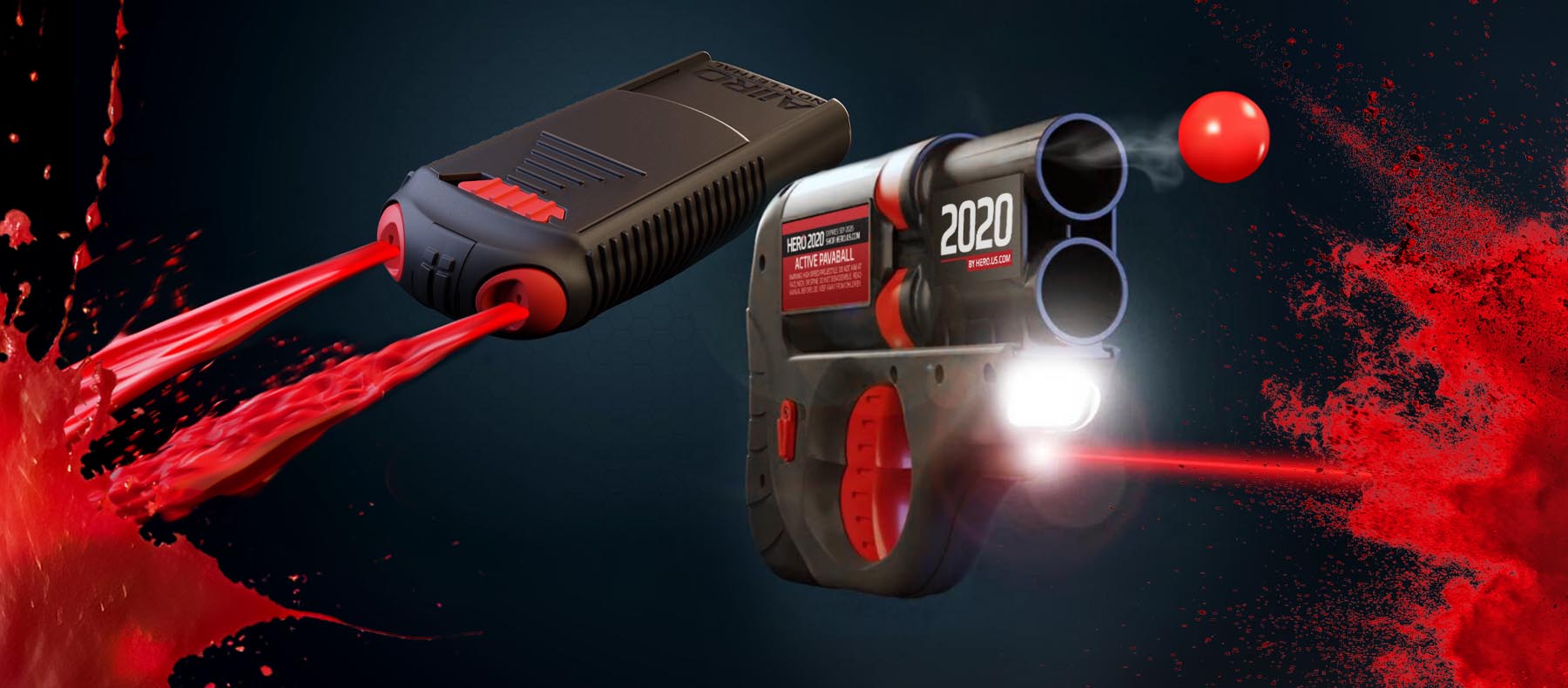

The Rising Tide of Road Rage
Life is at Stake When Tempers Hit the Gas

Something as simple as a quick drive to the store shouldn’t turn into a life-threatening situation, but it’s happening more and more. We tend to think of road rage as honking horns, rude gestures, and harsh words. But it can escalate into dangerous behaviors like hitting other vehicles or forcing them off the road. And when enraged drivers leave their cars, the ensuing physical confrontations can lead to serious injury or even death.
Road rage incidents are on the rise. This concerning trend not only puts lives at risk but also highlights the urgent need to address increasing anger and frustration in our lives. In this Street Smart Series article, learn about the psychology and statistics behind road rage, gain actionable tips for safer driving, and explore how non-lethal products can help keep you and your passengers safe.
The Numbers Behind the Wheel
Road rage has tangible consequences, impacting millions of people every year:
56%
of fatal crashes involved aggressive driving
8 in 10
of drivers experience road rage at least once per year
Every 18 hrs
someone is injured or killed in a road rage incident
400%
increase in road rage shootings over the last decade
Sources: AAA Foundation for Traffic Safety, The Trace, Gun Violence Archive
Real-World Costs
With incidents rapidly on the rise, road rage is quickly becoming a public safety crisis impacting lives in many ways:
- Financial: Aggressive driving can lead to fines, increased insurance premiums, and costly damage to vehicles.
- Legal: Many road rage incidents escalate to legal disputes, fines, or even jail time.
- Emotional: Victims and aggressors alike face lasting emotional damage, including anxiety, guilt, or PTSD.
- Physical: Incidents can result in severe injury or death
Aggressive Driving vs Road Rage
Road rage and aggressive driving are two different things, but both are dangerous behaviors that can lead to accidents and death. The National Highway Traffic Safety Administration (NHTSA) defines road rage as “an intentional assault by a driver or passenger with a motor vehicle or a weapon that occurs on the roadway or is precipitated by an incident on the roadway.”
While there is no official definition for aggressive driving, in general it can be categorized as traffic violations which endanger others such as dangerous speeding, tailgating, unsafe lane changes, and running red lights.
The difference comes down to intent, with road rage being driven by the desire to harm others.

The Psychology Behind Road Rage
Why does getting behind the wheel sometimes bring out the worst in people? Several psychological factors contribute to road rage:
Stress and Anger
Stress from work, personal challenges, or daily life can boil over once someone gets in the driver’s seat. The car becomes a confined space where unresolved frustrations find an outlet. That could mean anything from yelling at another driver to engaging in aggressive behavior.
Anonymity and Risk-Taking
Inside a car, drivers feel cloaked in anonymity. They are disconnected from face-to-face interaction, making it easier to express anger without considering the emotional toll on others. This perceived detachment leads to actions some drivers wouldn’t consider in other social settings.
Time Constraints/Control
Drivers running late may feel every delay is an insurmountable frustration. From being stuck in a traffic jam, to following a car driving at or under the speed limit, the feeling of lack of control and inconvenience can be extremely upsetting.
Past Experience
People who have experienced driving related accidents or trauma in the past may find themselves responding strongly when similar incidents occur. These reactions can be driven by a perceived lack of care from other drivers, an infringement of personal safety, or assumed aggressive action.
Substance Abuse
Unfortunately people do sometimes make the poor decision to drive while under the influence of alcohol or drugs. These mind altering substances can impact their ability to safely operate a vehicle, along with their emotional response to the actions of others.
Perspectives from Experts
Drivers who take time to recognize their own road rage triggers can take meaningful steps to help reduce it. At the same time, giving consideration to the emotional strains behind road rage can help recipients stay calm and diffuse the situation. Psychologists emphasize the importance of self-awareness and emotional regulation while driving.
“Road rage is a reflection of underlying stress. Learning to control anger and remain calm behind the wheel can prevent tragic outcomes.”
– Dr. Elaine Matthews, Anger Management Psychologist
Tips for Mitigating Road Rage
We all know keeping your cool on the road can sometimes be a difficult task. Whether you’re the person about to explode, or the target of an enraged driver, there’s actionable steps you can take to keep things from going too far.
How to Keep Calm
Know Your Triggers
Implement action plans before you get in the car, like giving yourself more travel time. Even just knowing you have a strategy can help reduce road rage.
Find your Zen
Practice relaxing habits like listening to calming music, books, podcasts, etc. to help lower stress levels and set a baseline for your mood while driving.
React Appropriately
Take several deep breaths when something happens. It’s a proven method to interrupt your body’s fight for flight response and gives you a moment to think.
Assume Differently
People make mistakes and are rarely out to get you. Try to imagine an innocent or humorous reason for the situation, it can completely diffuse your anger.
How to React when Targeted
Avoid Engaging
Do not retaliate or make eye contact. If you’re being tailgated, find a safe way to let them pass. Conflict is not worth your time or energy, and could ultimately cost lives.
Create Space
Give aggressive drivers plenty of space if possible. You may need more time to react to their unpredictable or dangerous movements.
Stay on the Road
Do not pull off the roadway and do not confront them. Doing so puts you in immediate danger. You can never know their intentions, and they may be armed.
Call 911
If the situation escalates to a dangerous level don’t hesitate call 911 for help. It’s not only your life on the line, but everyone around you as well.
We can all be better drivers. By maintaining self-awareness and reacting to road rage appropriately, we contribute to a safer environment for everyone.
HERO® Technology for Safer Roads

We believe everyone should be prepared to deal with unexpectedly dangerous situations. Road rage is no exception. Law enforcement officials have noticed the uptick in incidents and are asking people to plan ahead.
“Our officers are responding to more reports of aggressive driving than ever before. While education and awareness are key, having access to non-lethal self-defense tools can be an asset in extreme cases.”
– Officer James Waters
HERO® has developed patented, award winning non-lethal products to help mitigate the risk. When emotions run high on the road, having a safe, effective, and legal method of self-defense can make all the difference. HERO® products offer unique benefits:
- Compact and Concealable: Weighing less than a pound, and small enough to fit in a pocket, they’re designed for ease of access during stressful scenarios.
- Non-Lethal Technology: An alternative to firearms, HERO® products incapacitate attackers without taking a life, for safe and legal self-defense wherever you travel.
- Innovative Design: The patented technology found in HERO® devices is built for ease of use and reliable performance in high-stakes situations.
By empowering individuals to protect themselves responsibly, HERO® helps reduce the fear and uncertainty that can fuel road rage incidents.
The Future of Road Safety Starts with Us
Reducing road rage requires collective action. We hope everyone will take a moment to consider their own driving habits, prepare themselves with reliable protection, and strive towards creating safer roads for the benefit of all.

